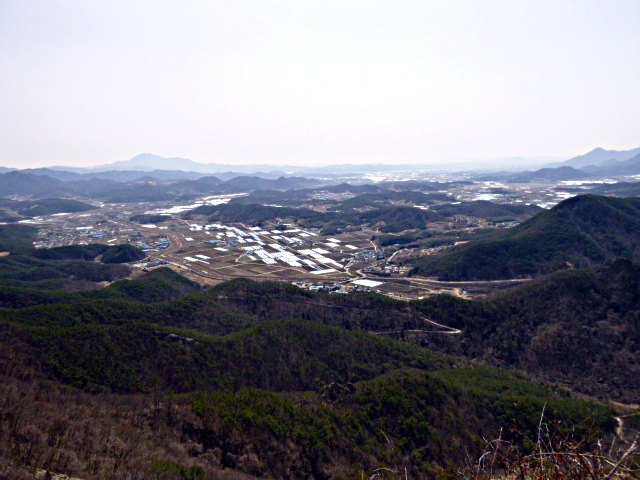Geumseong-sanseong: Hiking on History
Written by Blake Bouchard
(Originally appearing in the July 2013 issue of the Gwangju News.)
In continuing our series of reintroduced articles from past Gwangju News issues, this month we have selected this vacation-time article that incorporates hiking with sightseeing of the walled fortress of Geumseong Township in Damyang County. So grab your hiking boots and backpack and enjoy. — Ed.
If you ever find yourself feeling confined by Gwangju, and need an all-day escape from the city, hiking Geumseong-sanseong (금성산성) is the perfect destination. Geumseong is located near Damyang (담양), a mere 40-minute bus ride from Gwangju. Although generally known for its bamboo and dak-galbi (닭갈비, stir-fried chicken), Damyang also has some amazing hiking paths to offer, not the least of which is the hilltop fortress of Geumseong-sanseong.

Geumseong-sanseong was built in the early 13th century as a defensive enclosure designed to withstand a prolonged conflict. Seven kilometers of dry stone wall blend into the peaks surrounding a mountain valley. Fresh water is supplied by a spring in the center, and the gardens around the hermitage of Dongja-am (동자암) are a testimony to the agricultural potential of the valley. It seems probable that this fortress could have withstood a very protracted siege as long as there were defenders to man the walls.
Today, these walls have been reconstructed and serve as a trail for hiking and history buffs who love the freedom outside the city. The initial 45-minute ascent to the fortress runs through bamboo forests and along a mountain spur until the trail passes through the formidable walls at Boguk-mun (보국문), the main entrance into the fortress. In the interest of layered defenses, this gate opens into an enclosure dominated by the main wall and controlled by the Chungyong-mun (충용문) gate, which is a few hundred meters farther up the hill. For those interested primarily in the history and not in the longer hike, wander into the Dongja-am hermitage, or up into one of the neighboring fortresses or peaks; however, the entire loop is a much longer hike.
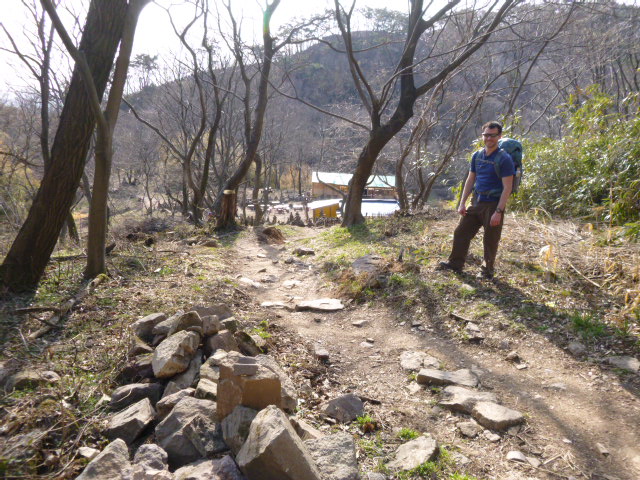
More adventurous hikers may elect to complete the loop, either clockwise or counter-clockwise. For those who run out of energy or daylight partway around the loop, trails lead directly across the valley from the west and north gates, cutting the route nearly in half. I cannot really comment on these treks, as my group opted to stay on the perimeter trails. However, based on the shape of the valley, any of these trails could save several hours of hiking.
We hiked the loop clockwise, and I would actually recommend this direction as the better route. I say this because the steepest climb cuts in and out of the valley between Cheolma-bong (철마봉) and the North Gate (북문). At the bottom is the West Gate (서문), where the stream from the spring exits the wall. Of the two sides, the north side of the valley is steeper and higher. I found it easier to climb this way rather than descending the steep sections. By the time the spring exits Geumseong-sanseong near the West Gate, it has become a substantial creek.
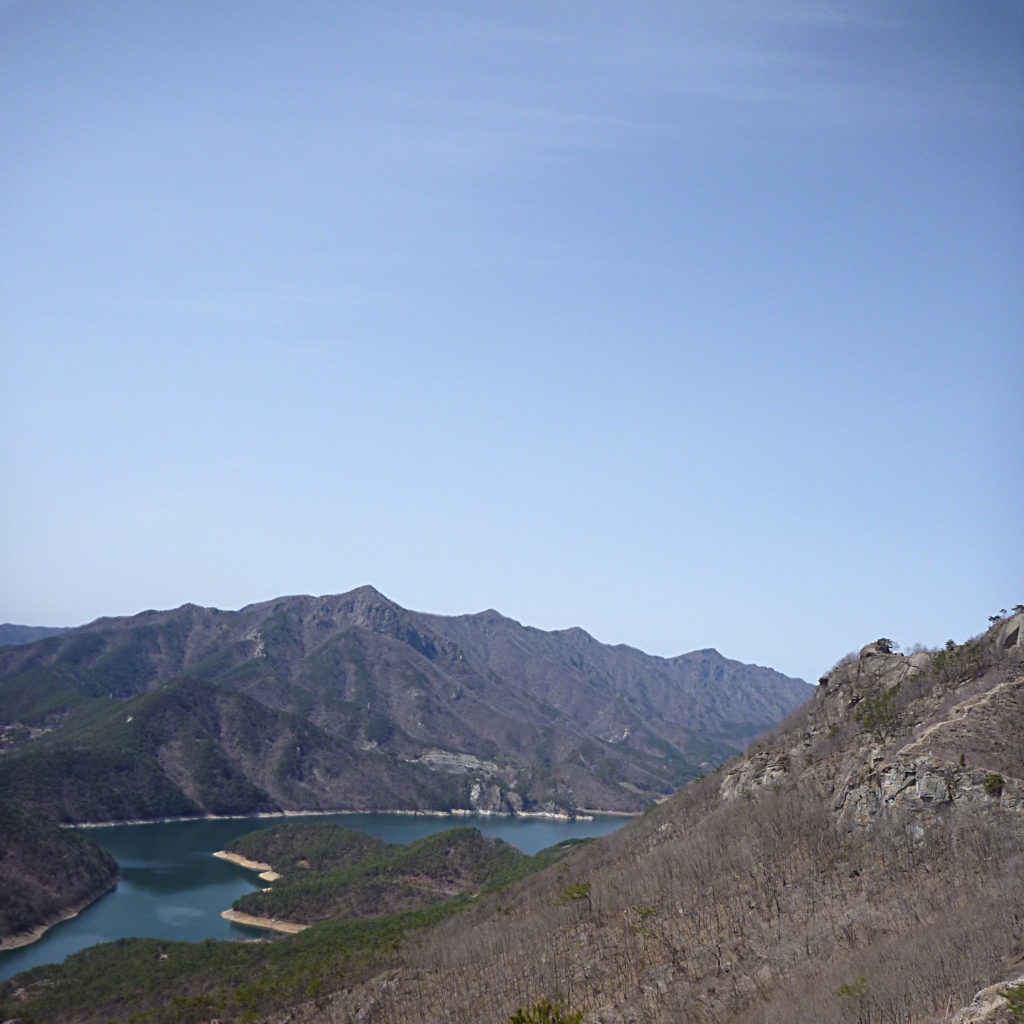
Buttresses around the West Gate make a great lunch or snack spot to listen to the creek and to enjoy the view of Damyang Lake down the valley. Sections of this trail are steep enough that a rope is provided to help your ascent. At the top of the climb is the North Gate with an open bastion where we settled in for a late lunch break. This is also where the trail makes a sharp bend around to the east, spreading an entirely new set of views out in front of hikers. We made the trip in early spring, and we could see ice and snow on the north-facing slopes of nearby valleys.
Once you have reached the North Gate, the remainder of the trail is relatively easy. Ten minutes past the North Gate, the ridge and trail make a sharp bend to the south, presenting all new views. We passed over another peak, Undae-bong (운대봉), before stopping for a rest at the East Gate (동문). After a few more ups and downs, we descended back into the valley to visit the Dongja-am hermitage.
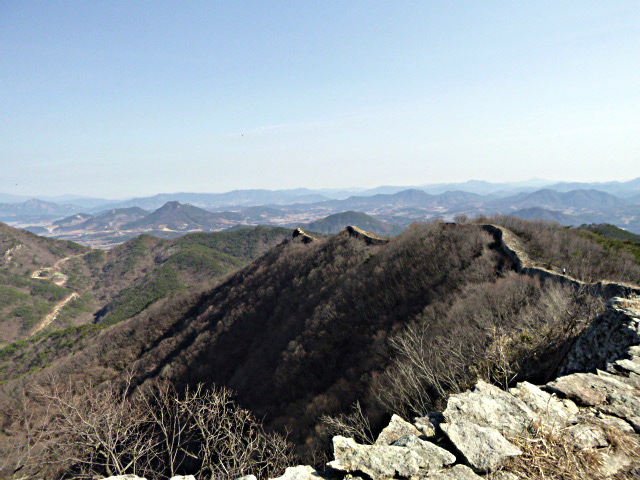
The hermitage is located just behind Chungyong-mun. It consists of a cluster of buildings, gardens, and a training yard. We slipped inside one of the buildings where a martial arts display was being shown on a large TV screen. The generator drowned out any commentary, but a series of young men were taking the stage to demonstrate their prowess with various weapons. We were informed by one of the other bystanders that these were all students trained at the hermitage. Depending on when you pass through the area, training may be taking place in the open area between the buildings.
Geumseong-sanseong provides hikers with beautiful panoramas encompassing most of Damyang County. Depending on which side of the loop you are on, you will be looking out on the farmlands of the river valley; the blues and greens of Damyang Lake; Bori-am (보리암) hermitage, clinging to the cliffs of Chulwol-san (출월산); or the mountains stretching away to the north and east.
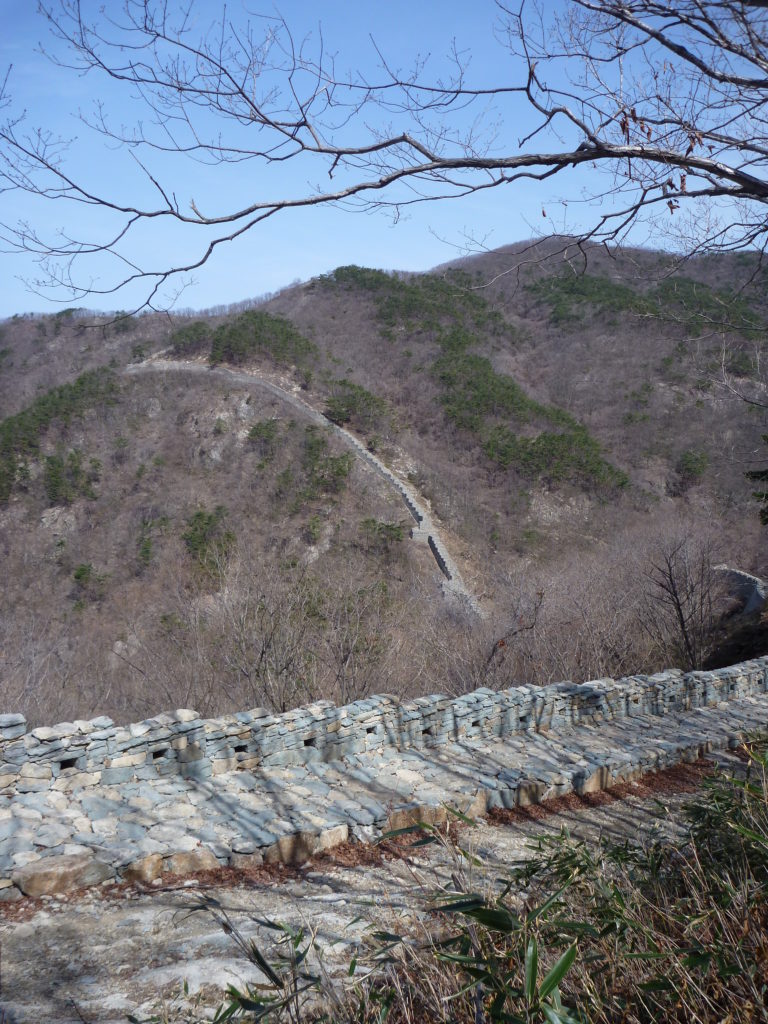
Directions to Geumseong-sanseong
From the U-Square Bus Terminal, catch an inter-city bus to Damyang. They run every 20–30 minutes. It takes 40 minutes to get from U-Square to the Damyang bus terminal. From this bus terminal you can take a taxi to Damyang Resort Spa for about 10,000 won, or you can catch a local bus to the same location. All local buses display the same number, so ask either the person at the ticket counter or the driver where the bus is going.
Hiking Tips: 9 Things to Take
- A lot of water – The hikes here are not usually that grueling, but the heat and humidity suck you dry.
- Rain jacket – Unpredictable weather is the name of the game here. Be prepared.
- Sunscreen – The sun here is strong.
- Sunglasses – Not just for the sun. Often there are dusty winds over ridgelines.
- Shareable snacks – Korean hikers will often offer goodies at rest stops. It is polite to reciprocate.
- Booze and mug – Hiking is a boozy social thing here. If you are invited to join a group for lunch, it’s best to be able to contribute.
- Understanding/patience – Hiking is Korea’s pastime. Because of this, the trails are often, quite literally, gridlocked. Make conversation with your neighbors.
- First aid kit – Best to be safe and bring one along.
- Toilet paper – This really is a good idea wherever hiking in Korea.
The Author
Blake Bouchard was a teacher in Gwangju before returning to British Columbia, Canada, where he has now received a JD degree and is embarking on a career in criminal law.





